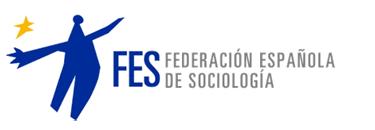Uso didáctico de las tecnologías y sus implicaciones en la agenda educativa mundial: estudio de caso sobre implementaciones en profesores universitarios colombianos
DOI:
https://doi.org/10.24197/st.2.2024.71-90Palabras clave:
Modelos educativos, didáctica, currículo, tecnología, educación universitaria.Resumen
El presente artículo expone los resultados de investigación de un estudio comparado centro en reconocer los diversos modelos de integración didácticos, con o sin mediación tecnológica, que utiliza el profesorado universitario colombiano, analizando los criterios de selección, uso y efecto curricular en la enseñanza. Esta incursión de las tecnologías, especialmente, dentro del desarrollo del pensamiento crítico, creativo y científico para abordar la realidad y resolver problemas reales; siendo esta categoría parte de las dimensiones que constituyen el instrumento de recolección. La investigación de corte transversal, con alcance descriptivo-inferencial y registro prospectivo y no experimental, se realizó con una muestral inicial de 190 profesores participantes. Sin embargo, por resguardo de completitud y criterios de inclusión, la muestra de análisis fue de 163, respondiendo a las condiciones de aleatoriedad, tamaño y representatividad; según género, rango etario y nivel máximo de estudios alcanzados, bajo un nivel de confianza del 95% y un error de estimación de 5%. Los principales resultados permitieron inferir la relación entre el uso de estos modelos mediados por TIC y su influencia con el perfil de ciudadano formado en la Educación Superior.
Descargas
Referencias
Aoun, J. (2017). Robot-Proof: Higher Education in the Age of Artificial Intelligence. Cambridge: The MIT Press.
Cabrero, J., y Román, P. (2008). E-actividades. Un referente básico para la formación en Internet. Sevilla: Editorial MAD.
Castañeda, L., y Adell, J. (2013). Entornos Personales de Aprendizaje: claves para el ecosistema educativo en red. Alcoy, España: Marfil. Recuperado de http://www.edutec.es/sites/default/files/publicaciones/castanedayadelllibrople.pdf
Coll, C. (2013). La educación formal en la nueva ecología del aprendizaje: tendencias, retos y agenda de investigación. In Aprendizaje y educación en la sociedad digital (pp. 156–170). Recuperado de https://www.researchgate.net/publication/259006556_La_educacion_formal_en_la_nueva_ecologia_del_aprendizaje_tendencias_retos_y_agenda_de_investigacion
Colom, A., Salinas, J., y Sureda, J. (2006). Tecnología y medios educativos. Madrid: Cincel. Educación y Futuro.
Comisión Internacional sobre los Futuros de la educación. (2022). Reimaginar juntos nuestros futuros: un nuevo contrato social para la educación. Madrid. Recuperado de https://unesdoc.unesco.org/ark:/48223/pf0000381560
Del Fresno, M. (2011). Netnografía. Investigación, análisis e intervención social online. Barcelona: Editorial UOC.
Gimeno, S. (1988). Teoría de la enseñanza y desarrollo del curriculum. Madrid: Anaya.
Gros, B. (2015). La caída de los muros del conocimiento en la sociedad digital y las pedagogías emergentes. Education in the Knowledge Society (EKS), 16(1), 58–68. https://doi.org/10.14201/eks20151615868
Jiménez, I. (2020a). Modelo didáctico tecnosocial una experiencia de educación para la ciudadanía con jóvenes universitarios desde el estudio de los conflictos sociales. El Futuro Del Pasado: Revista Electrónica de Historia, 11, 637–658. https://doi.org/https://doi.org/10.14516/fdp.2020.011.021
Jiménez, I. (2020b). Rasgos y tendencias de la Didáctica con TIC: retos a partir de la nueva ecología del aprendizaje. Estudios Pedagógicos (Valdivia), 46(2), 215–229. https://doi.org/http://dx.doi.org/10.4067/S0718-07052020000200215
Jiménez, I., y Segovia, Y. (2020). Modelos de integración didáctica con mediación TIC: algunos retos de innovación en las prácticas de enseñanza. Revista Culture and Education. https://doi.org/https:// doi: 10.1080/11356405.2020.1785140.
Jiménez-Becerra, I. (2022). Cyber-culture and technosociety: trends, challenges, and alternative research challenges to consolidate possible citizenship. Sociología y Tecnociencia. Ediciones Universidad Valladolit: España, p. 1-19. DOI: https://doi.org/10.24197/st.2.2022.1-19
Nussbaum, M. (2012). Crear Capacidades: propuestas para el desarrollo humano. Barcelona: Paidós.
Pagès, J. (1994). La didáctica de las Ciencias Sociales, el curriculum de historia y la formación del profesorado. Signos. Teoría y Práctica de La Educación, 8(13), 38–51.
Pisani, F., y Piotet, D. (2009). La alquimia de las multitudes: cómo la web está cambiando el mundo. Barcelona: Paidós.
Salinas, J. (2008). Innovación educativa y uso de las TIC. Sevilla: Universidad Internacional de Andalucía. Recuperado de https://dspace.unia.es/bitstream/handle/10334/2524/innovacioneduc2008.pdf?sequence=1
Descargas
Publicado
Número
Sección
Licencia
Derechos de autor 2024 Isabel Jiménez Becerra, Yecid Eliecer Gaviria Restrepo, Jorge Amado Rentería Vera, Yecid Francísco Blanco Duarte, Miguel Rosso Jaimes, Cindy Meneses Castaño, Johanna Beatriz Ayala Moreno, Mauricio David Almeida Benavides

Esta obra está bajo una licencia internacional Creative Commons Atribución 4.0.
Todos los trabajos publicados en la revista Sociología y Tecnociencia se distribuyen bajo una Licencia Creative Commons Atribución 4.0 Internacional (CC BY 4.0).
Los autores continúan como propietarios de sus trabajos, y pueden volver a publicar sus artículos en otro medio sin tener que solicitar autorización, siempre y cuando indiquen que el trabajo fue publicado originariamente en la revista Sociología y Tecnociencia.


